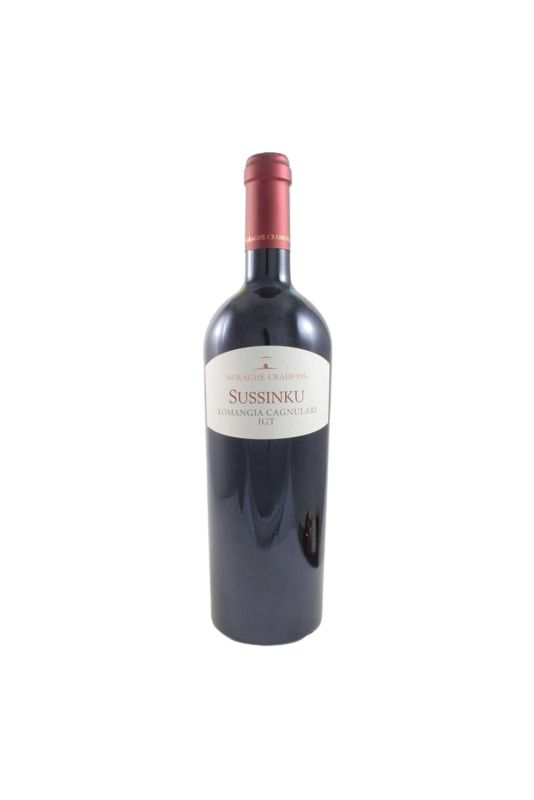




We are little wine craftsmen and in our Land, Badde Nigolosu, in Sennori's countryside, we cultivate vine in 33 hectares of land. We also Then my father and I select out the best clusters on a custom-built steel sorting table. The grapes are de-stemmed but not crushed, then the must macerates on the skins in cement vats without the addition of any SO2. The length of maceration depends on the characteristics of the must; it can last from three to twenty days. Lengthier macerations are not part of our local culture. The wine is always drawn off by hand in order not to harm the skins. The wine then continues its journey in small cement vats until bottling, which comes usually two to three years later.
In our winemaking, we do not make any use of any synthetic chemicals apart from sulphur: no added yeasts, no enzymes, or any other adjuvant either in fermentation or in maturation. The wine is neither filtered, clarified, or barriqued. Give time to rest after shipping. Leave in to oxygenate in the glass. Probable remaings and CO2 are natural. Every bottle can be different. We do not use international grape varieties to smooth out our wines.
Ingredients: Grape, Sulphites (Sometimes).
We are modest-sized artisans of the earth. You will understand, then, when we say that we do not follow the dictates of the market, but produce wines that we like, wines belonging to our culture. They are what they have to be and not what you want them to be. All of this because we are simply modest-sized wine artisans who make no more than 45,000 bottles, when nature smiles on us.
Our Wines
Our wines are the fruit of a historical patrimony passed down to us by those who preceded us. They are made only from grapes that we grow in our historical and traditional vineyards. All of our wines are true cru wines: each vineyard yields its own particular wine, they are are monovarietals: 100% cannonau, 100% monica, 100% pascale, 100% vermentino, 100% moscato. From each individual vineyard we produce a specific wine. Dettori Bianco from vermentino; three separate cannonaus, Tuderi, Tenores, and Dettori; Chimbanta from monica; Ottomarzo from pascale; and Moscadeddu from moscato. Our annual production ranges from 20,000 to 45,000 bottles. In 2008, we made only 2,000 bottles, due to an attack by downy mildew; although we watched all of our fruit disappearing on the vines, we stayed faithful to our tradition: we use no poisons. It is better to lose a season's grapes than to pollute our earth.
In 2006 and 2007, we bottled Chimbanta and Battoro, since a part of the monica vineyard had naturally dried on the vines. So we preferred to process those grapes separately to make a naturally-dried passito, a type very popular years ago.
All of the grapes and wines that do not measure up to our rigorous selection parameters are used to make Renosu. The 2006 Renosu, however, was made entirely from Dettori 2006, which was not up to standards.
The reason for all of this is that we want our wines to reflect the quintessence of our corner of the earth, our own true terroir. We produce wines of tradition and terroir. Wines that are free, free to express themselves, to express their growing area to the fullest, since they are simply a squeeze of grape juice that has fermented. They are not wines that are slaves to business logic and marketing strategies. These are not wines that have been designed and cleverly packaged for some important customer.
Why don't we use DOC
All of the official definitions of the term terroir proclaim in essence the same idea: Terroir is a defined geographical area from which come products from the earth that are unique, original, and inimitable, thanks to an interaction of geologic, climatic, cultural, and human factors.
Terroir is a defined geographical area: this is one of the reasons that I cannot agree with the Italian generalist DOC system. For example, what does Cannonau di Sardegna DOC really mean? Geologists and biologists consider Sardinia a true continent. If just the cannonaus that my three vineyards produce are each different from the others, then just imagine the differences between cannonaus grown in areas separated by hundreds of kilometres.
The DOC system was introduced with the noblest of motives, but with the passing of the years things changed, and the system has become a means for selling in particular products of middling to low quality, wines that are purchased only because they are DOC and not because of the reputation and reliability of the producer or for the real quality of the wine.
For this reason, we decided not to use the DOC, but to use instead a much more restricted denomination, that of Romangia IGT. Romangia is a delimited geographical area to which the commune of Sennori e Sorso belongs.
The definition of terroir specifies as well products from the earth that are unique, original, and inimitable. This means that a terroir wine should always be recognisable. But increasingly often I drink wines whose growing area I am hard-pressed to guess. Is this a wine from the north? From the south? Australian? The grapes are always different, yes, but what about the auxiliary products that go into both grapes and wine? What fertilisers in the vineyard, enzymes, yeasts, tannins, and all of the other products that are the same all over the world.
Data sheet
You might also like